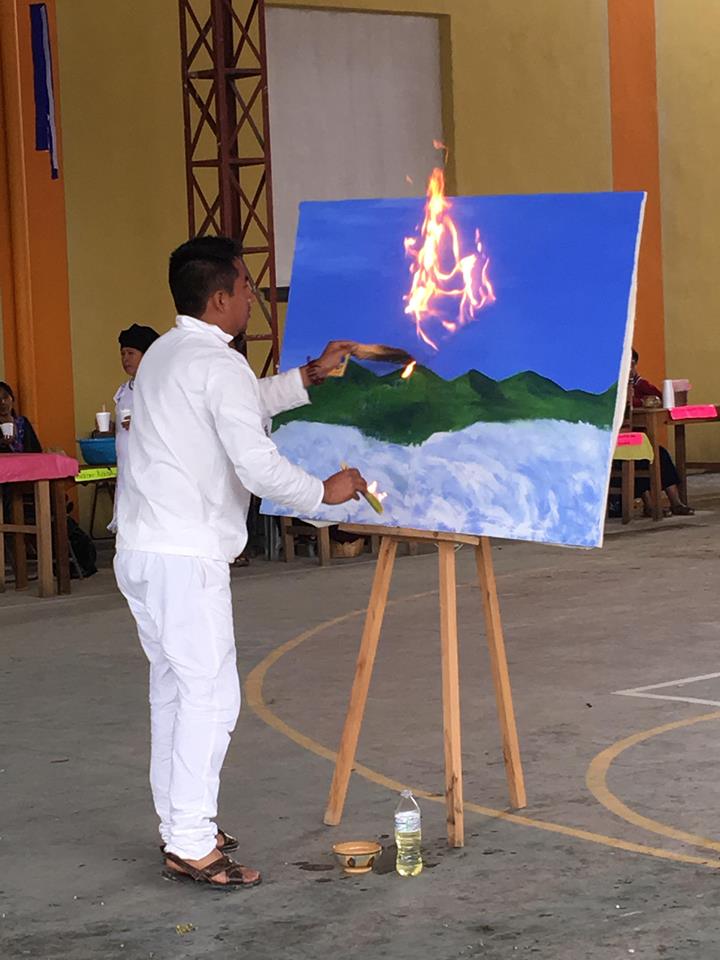
El “Incendio del Zempoaltepetl” es un cuadro de Alberto Monterrubio, primer pintor y artista visual de la comunidad de Santiago Zacatepec Mixe. Realizado entre 1938-1940, representaba uno de los eventos míticos más importantes del pueblo Ayuuk (Mixe de Oaxaca, México): el incendio de I´PX YUJKM (Cerro Veinte o Zempoaltepetl), montaña sagrada y ceremonial de esta cultura; incendio provocado por los conflictos territoriales entre la cultura Mixe y Zapoteca. Pintura que aún persiste en la memoria de las personas de la tercera edad, a través de recuerdos, fragmentos de memoria indefinidos, como una de las piezas emblemáticas de la historia del arte de dicho pueblo.
Se decide realizar una pieza que busca reactivar la memoria histórica de esta población a través de una pieza de acción-performatica realizada en su espacio cotidiano (cancha municipal). Acción consistente en la quema de un cuadro que representa a I´px Yujkm, acompañada por una banda filarmónica que interpreta el vals “Dios nunca muere” característico de velorios y entierros en este territorio. Planteada como monumento efímero a la memoria de la persona que coloca las bases del oficio artístico y cultural en la comunidad, es al mismo tiempo metáfora sobre la fragilidad de la memoria, de los elementos culturales que definen la identidad, así como la historia y de los símbolos que dan sentido a esta.
The “Fire of Zempoaltepetl” is a painting by Alberto Monterrubio, the first painter and visual artist of the Santiago Zacatepec Mixe community. Made between 1938-1940, it represented one of the most important mythical events of the Ayuuk people: the fire of I´PX YUJKM (Cerro Veinte or Zempoaltepetl), a sacred and ceremonial mountain of this culture; caused by territorial conflicts between the Mixe and Zapotec cultures. A painting that still persists in the memory of the elderly, through memories, indefinite fragments of memory, as one of the emblematic pieces of the art history of said community.
It was decided to make a piece that seeks to reactivate the historical memory of said community through an action-performance piece carried out in its daily space (municipal court). An action consisting of the burning of a painting representing I´px Yujkm, accompanied by a philharmonic band playing the waltz “God never dies” characteristic of wakes and funerals in this territory. Conceived as an ephemeral monument
to the memory of the person who laid the foundations of the Ayuuk artistic and cultural profession in the community, it is at the same time a metaphor for the fragility of memory, of the cultural elements that define identity, as well as history and the symbols that give meaning to it.
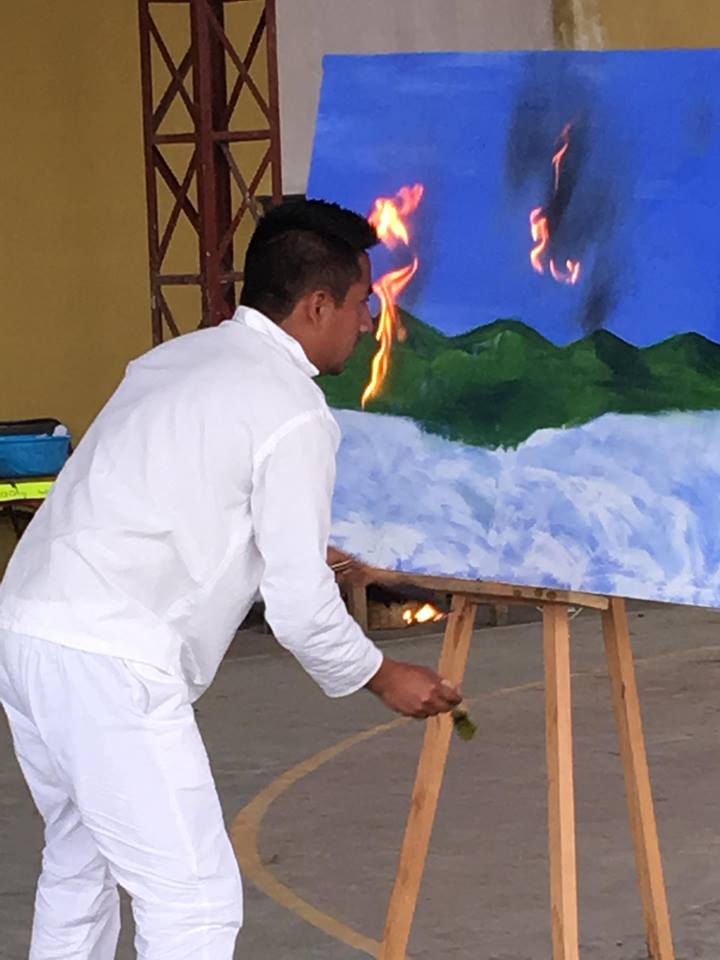
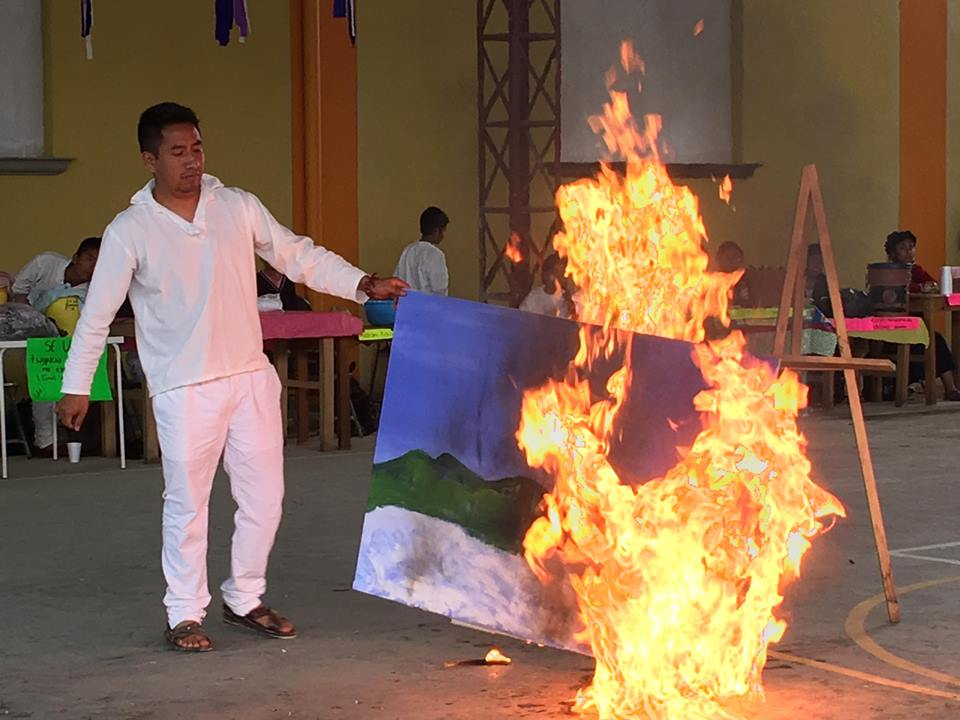
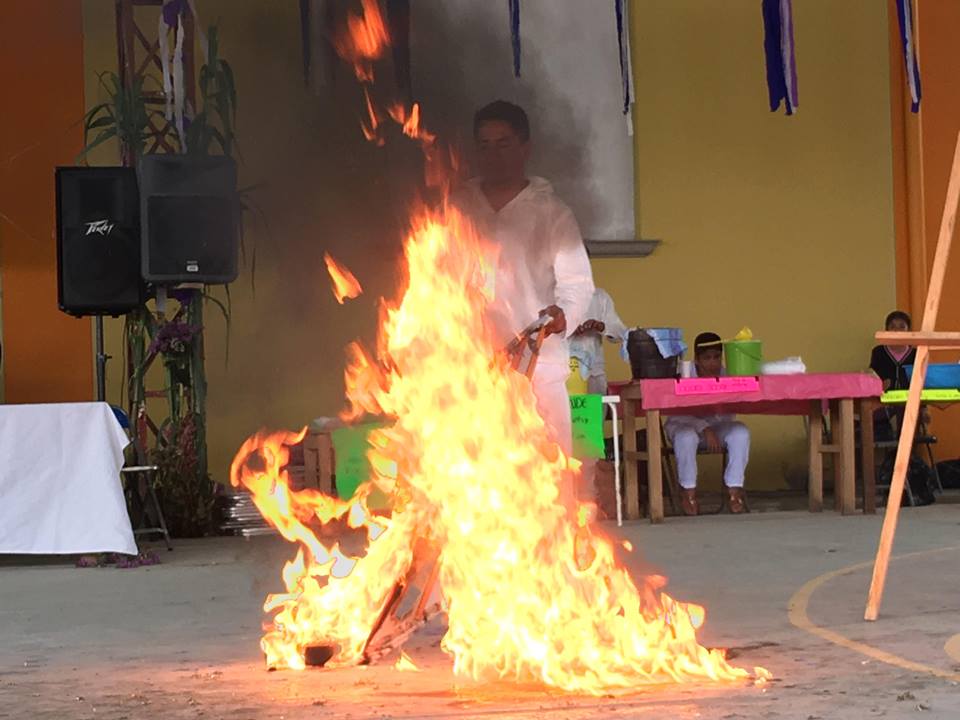
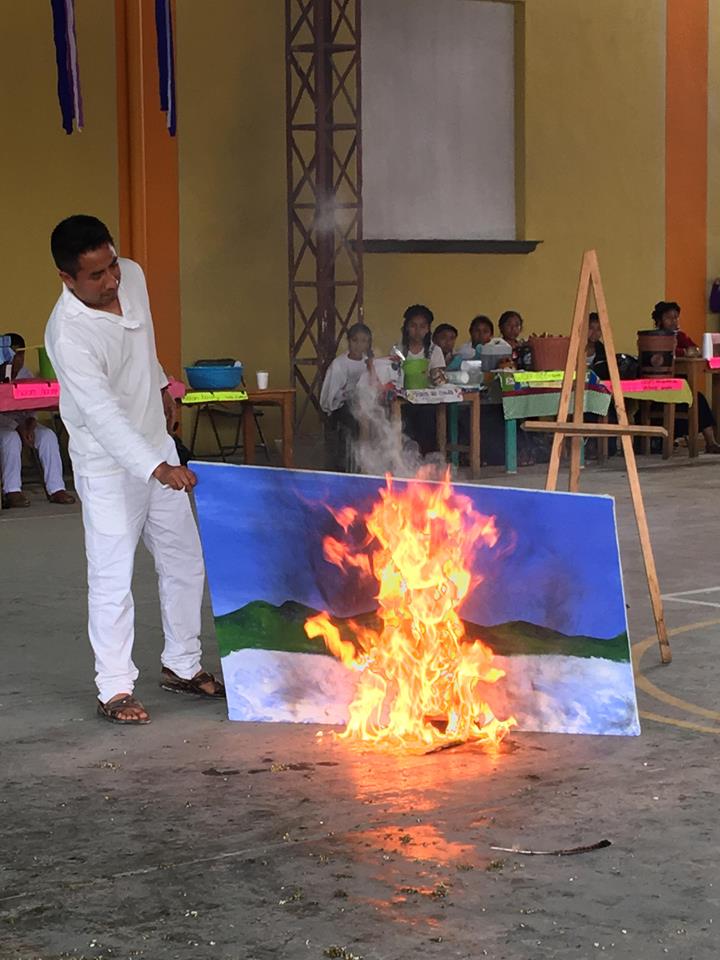
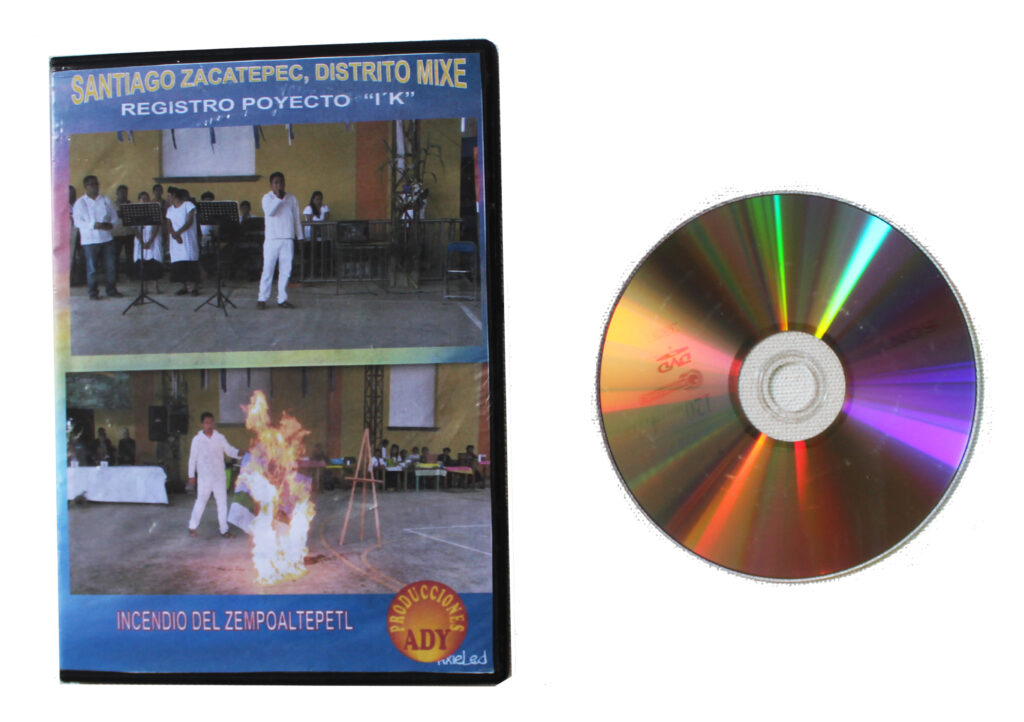
Registro en DVD / Video footage